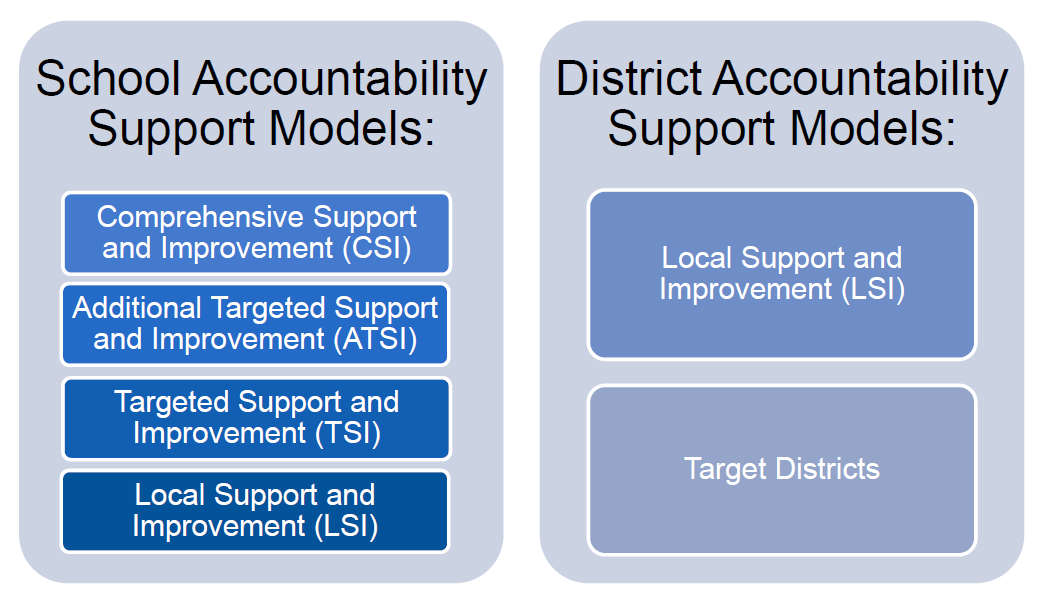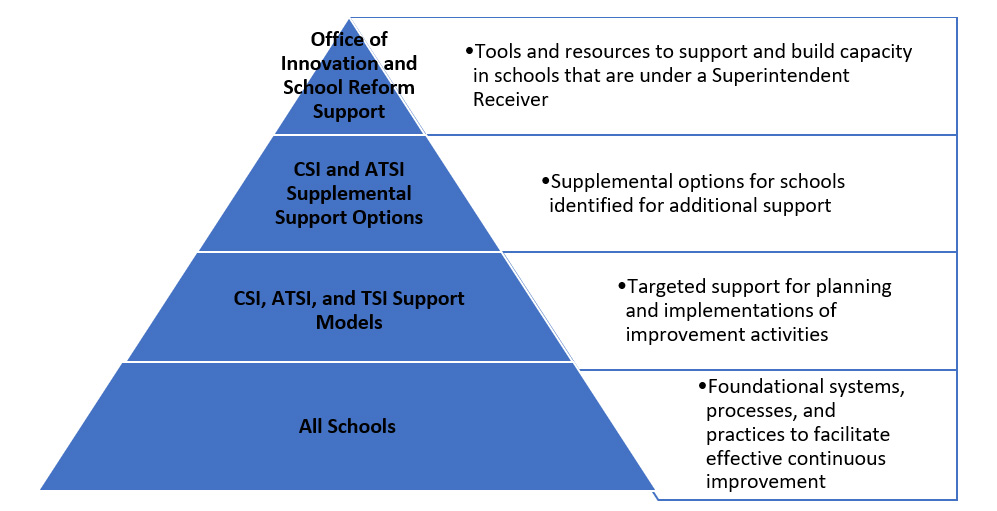ESSA Accountability System
Overview
The Every Student Succeeds Act (ESSA), the main federal law for K-12 public education, aims to ensure all children get a quality education. The law requires that states hold public schools accountable for how students achieve. ESSA does give states flexibility—their accountability systems can measure much more than just test scores.
For more information on New York State’s ESSA Plan, visit the New York State Approved ESSA Plan page. For more information on assessment and accountability waiver requests the United States Department of Education, visit the ESSA Assessments and Accountability Waivers page.
Accountability Indicators
The New York State Education Department (NYSED) has established a set of indicators to measure school performance. NYSED developed these indicators with the input of thousands of people statewide—parents, educators, and experts. The indicators include:
- student academic achievement;
- progress of English language learners;
- chronic absenteeism; and
- graduation rates for high schools.
To view recent webinars on how accountability determinations were calculated, please visit the NYSED ESSA Accountability Webinars webpage.
For a detailed explanation of how each accountability indicator is calculated and other calculation methodology related to New York State's ESSA accountability system, please review the resource:
The chart below shows the accountability indicators used to calculate accountability determinations for the 2023-24 and 2024-25 school years (SY) based on 2022-23 and 2023-24 SY results, respectively. The Student Growth measure at the elementary/middle level and the College, Career, and Civic Readiness (CCCR) measure at the high school level are not used for accountability determinations calculations, but are provided for informational purposes only:
Indicators Calculated in the 2023-24 and 2024-25 SYs (using 2022-23 and 2023-24 SY Results, Respectively)
| Elementary/Middle | High School |
|---|---|
| Weighted Average Achievement | Weighted Average Achievement |
| Core Subject Performance | Core Subject Performance |
| English Language Proficiency |
English Language Proficiency |
| Chronic Absenteeism | Chronic Absenteeism |
| Student Growth (Informational) | Graduation Rate |
| CCCR (Informational) |
Accountability Support Models
Schools and districts earned levels for all students and for student subgroups. Such subgroups include members of racial and ethnic groups, low-income students, students with disabilities and English language learners. These levels are used to determine whether a district or school is identified for the following accountability support models:
Under the determined accountability support models, NYSED has developed tools and resources to support and build capacity around continuous improvement for all schools. The figure below shows the multiple entry points that support models provide for flexible, adaptable practices that promote sustainable structures around improvement planning and monitoring impact.
Related Resources
Required Actions for CSI, ATSI, TSI, and Target District Support Models
For additional information on tools and resources to support continuous improvement in all schools and districts, please visit the NYSED Accountability Continuous Improvement webpage.
For Charter Schools
A charter school identified for CSI, ATSI, or TSI shall take such actions as are required by its charter authorizer pursuant to Article 56 of the Education Law consistent with the charter agreement that each charter school has with its charter authorizer. To ensure that a charter school identified for CSI, ATSI, or TSI is aware of this designation, the charter school leader and board of trustee president must submit a 2023-24 Charter School DCIP Equivalency Form
For questions regarding charter schools, please email charterschools@nysed.gov.







